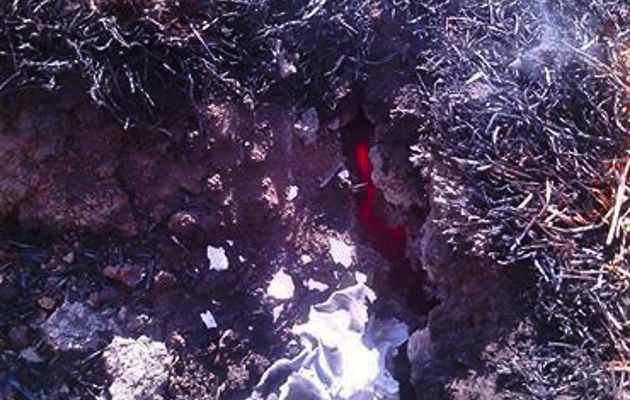
Last month the Limpopo Provincial Disaster Management Centre (PDMC) received a call from the Sekhukune District Municipality regarding the emergence of an unusual fire, consisting of mud and grey ash in a damp wetland area on the outskirts of the village.
The fire has steadily burnt through an area larger than a rugby field, transforming the wetland into what looks like an active volcanic field. A community member, Mbusi Ka-Mphezulu, posted photos on Facebook of a lava-like substance glowing from underneath the ground. He said,
"While we were doing ANC work this is what we saw, the ground is on fire. It is like a volcano. People of Sehlakwane please take note of this unusual stuff."In a Times LIVE article, unusual seismic activity, tree roots burning underground or the ongoing drought conditions, which have dried out the wetland, have all been pointed to as possible sources for the mysterious 'volcano' fire phenomenon.
Meanwhile, in Iraq, a video purportedly showing what initially seemed like molten lava gushing from the ground in the northern city of Kirkuk has recently gone viral, prompting speculation online that a "small volcano" had emerged.
Electrical fires and arcing can reach temperatures of over 3,000ºC. The sandy material beneath the surface in Kirkuk is likely quartz-rich and could be mixed with calcite - also common in the area - meaning it would have a melting point of between 1,000º and 1,500ºC.
After visiting the site, Ali Adel, a local volcano specialist, told Al-Sumaria News, that the molten sand was caused by "the combustion of an electric cable buried under the ground."
It's possible that an underground fire caused by electricity, and perhaps exacerbated by other combustibles, could have produced the sustained necessary heat to melt the sandy material, producing the "mini volcano", although it's likely that large quantities of molten rock underground would be necessary to sustain it.
The area around Kirkuk is known for its oil fields, and is not a volcanically-active area, although Iraq does have a number of extinct volcanoes. The nearest region with potentially active volcanoes is northern Iran. To have subterranean fires related to hydrocarbons, you really need coal, not oil. Underground coal fires can burn for decades, even thousands of years, but they burn at the 150-250ºC range, much too low to melt sand or rock.
Although the exact cause of these two mysterious incidents remain inconclusive, it does prompt some investigation into fires below Earth's surface.
Wild fires: 'As above, so below'
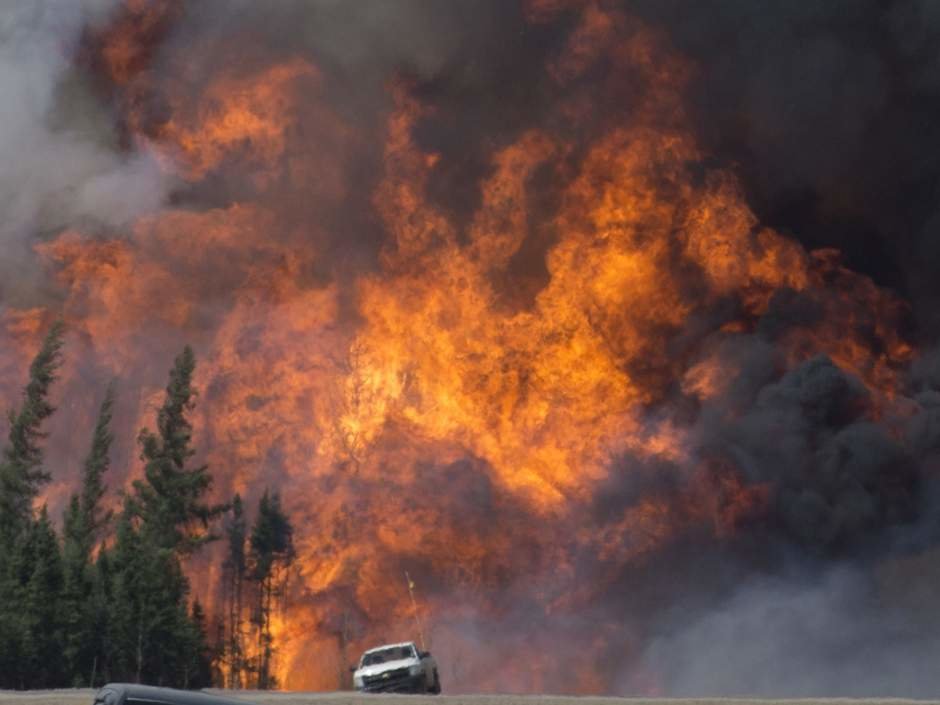
What has not received much attention are those fires beneath the earth's surface that never really go out. Yet these reignited fires - called holdover or sleeper fires - are becoming more common. Sixteen Alaskan wildfires have been attributed to holdovers this year alone. In the past, officials haven't even kept records of the number of holdovers, but they're rare enough that we know 16 in one region is abnormally high. One of this year's wildfires was started by a holdover fire from two years ago. It is often difficult enough to douse an established wildfire above ground - can you imagine trying to do so below ground?
A contributory factor to this 'abnormally high' increase may be 'outgassing' of methane and other natural gases. Here's a small sample we've collected of recent natural outgassing-related events:
- 20 foot high flames spew continuously from borehole in Madhya Pradesh, India
- Mysterious burning crack in the earth releases gas in Chimborazo, Ecuador
- Condamine River's mysterious bubbling methane intensifying in Queensland, Australia
- Frozen methane bubbles trapped under Canadian lake ignited with a match
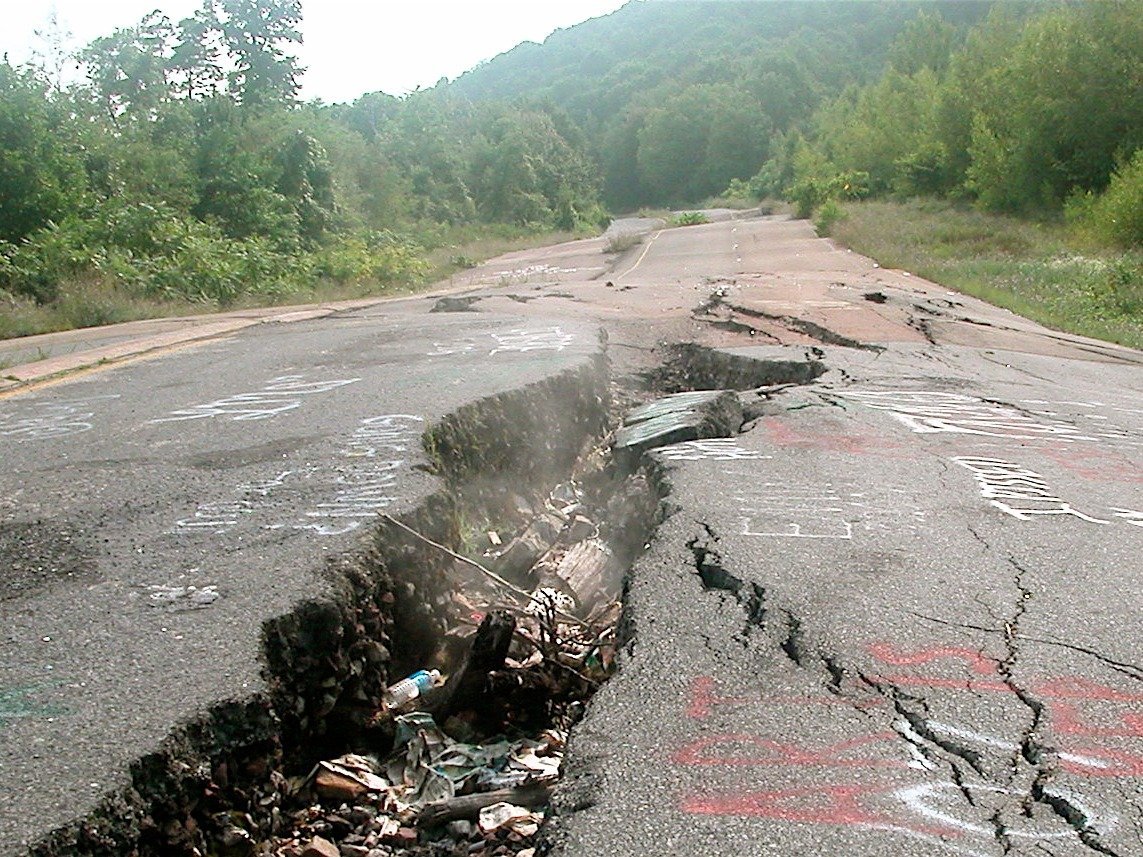
Explosions from below: The Yamal peninsula crater-holes
In the relentless quest for new and profitable oil and gas reserves, exploratory drilling can often have unforeseen consequences (such as the link between fracking and earthquakes). The location of the aforementioned 'door to hell' was originally thought to have been an oil field. Instead the engineers found gas, and the ground beneath the drilling rig and camp collapsed into a wide crater and disappeared.
With the potential for a dangerous release of poisonous gases from the cavern into nearby towns, burning the gas off seemed the most viable option, but after estimating it would burn out within a few weeks, it continues burning more than four decades later!
As well as an insight into the human propensity for thinking we know more than we actually do, for 'wishful thinking' as it were, that incident highlights the incredible danger which may be posed by these vast underground stores of methane and other gases.
In 2014 a mysterious crater-hole was discovered in the Yamal peninsular, northwest Siberia, Russia. It was 'probably caused by methane released as permafrost thawed' according to researchers, and the result of 'internal forces not seen in 8,000 years'. Since then new information has come to light, with witnesses reporting an 'explosion' and a 'glow in the sky' from 100 km away.
This would indicate an extremely powerful explosion occurred from below to form this 'crater-hole', in a region known in the local Nenets language as the 'end of the world'. The recent discovery by scientists of methane 'bubbles' on the remote Belyy Island in the Kara Sea off the Yamal Peninsula coastline may be another alarming sign of increased activity in the depths.
Last year an active underwater volcano spewing methane gas was found in southern Alaska. As the number of volcanoes erupting right now is greater than the 20th century's YEARLY average, a comparable escalation in activity of their underwater counterparts seems logical. But 'out of sight, out of mind' as the saying goes, and little attention is paid to these formidable unseen formations. To put this in perspective - it's estimated that there are up to one million submarine volcanoes on our planet!
As the man-made global warming hoax spirals out of control, evidence suggests that the world is on the brink of a new ice age. The 'warming' that is taking place nowadays is likely due to increased volcanic activity (connected with a minute slowdown in planetary rotation), especially under the Arctic Ocean, where methane clathrate deposits are being ruptured in enormous quantities these days, releasing methane gas into the atmosphere.
The degassing process is a normal phenomenon in permafrost regions containing quantities of methane. With lightning strength and frequency increasing (an ignition source) and more venting of enormous mounds of methane (a source of fuel) occurring, potentially catastrophic explosions could result.
Including the initial Siberian 'crater-hole', seven craters have now been discovered in the Arctic region, five of which are on the Yamal peninsula. The planet itself gives us a historic and rather sobering visual reminder of this type of phenomenon. The google image below shows countless such craters, natural formations from the last ice age.
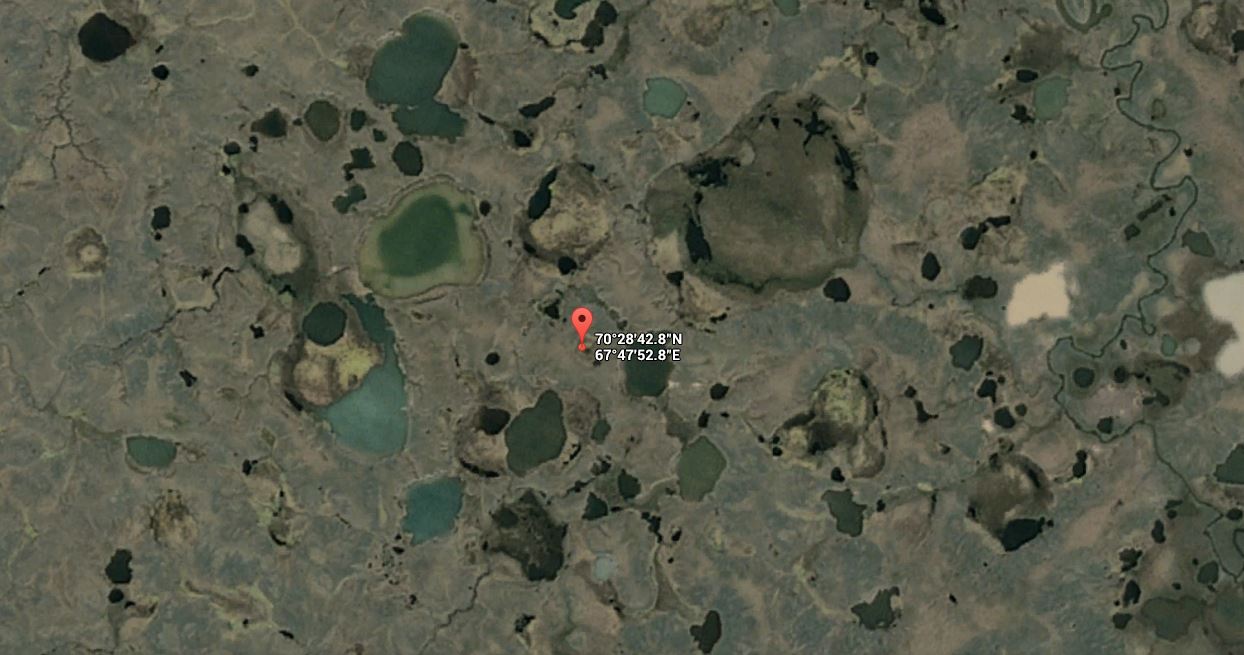
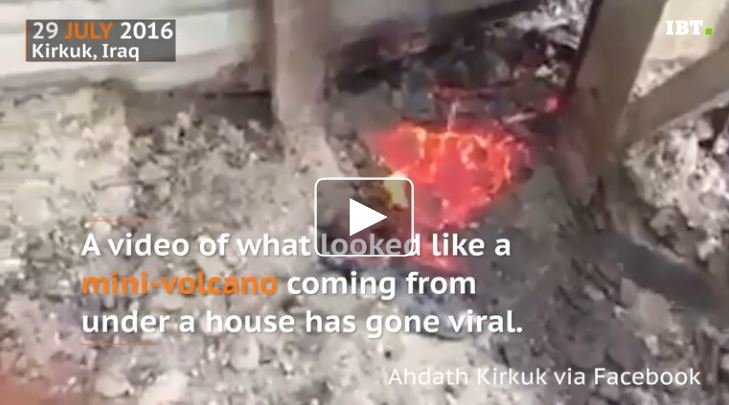
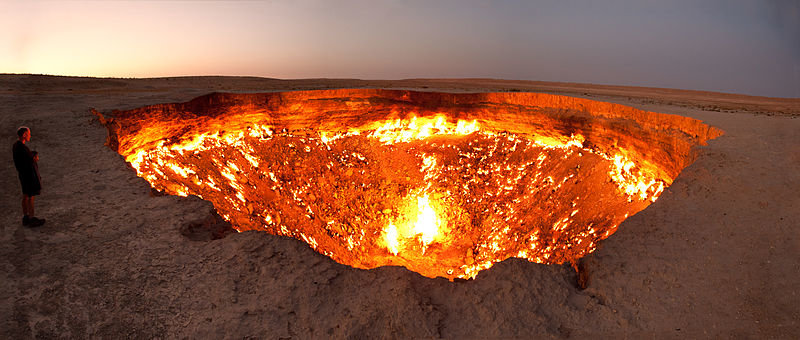
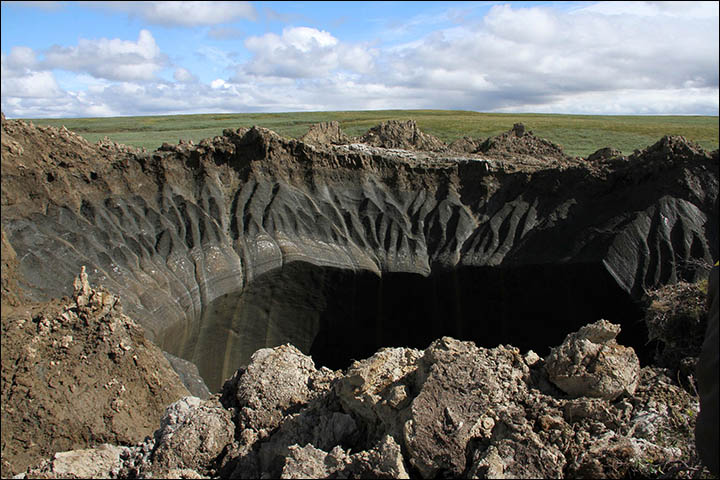
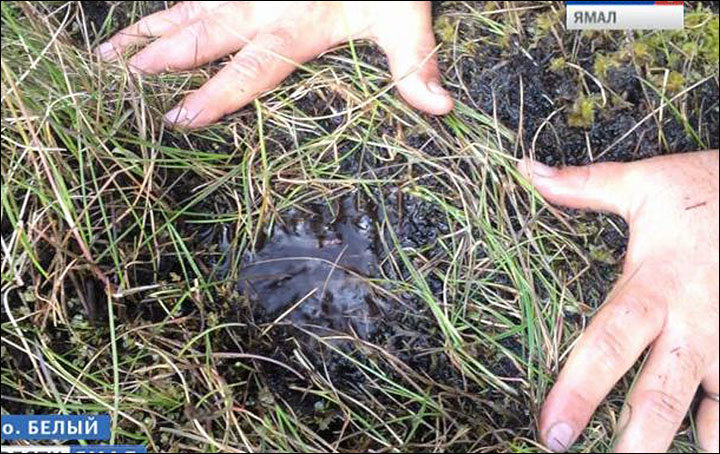
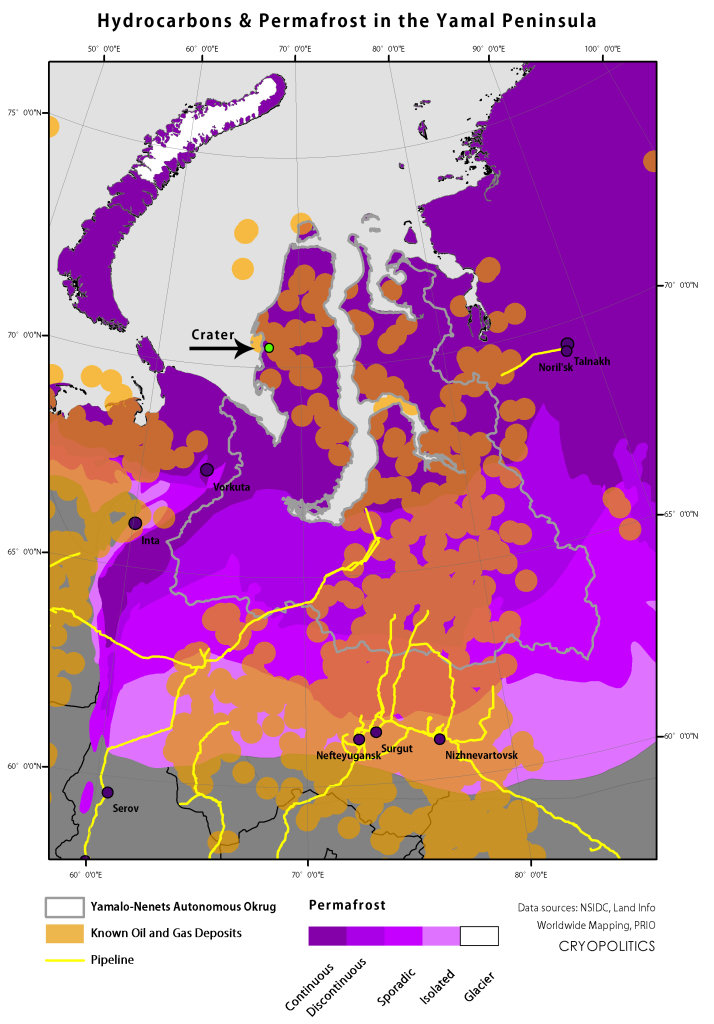



The world will be destroyed by fire